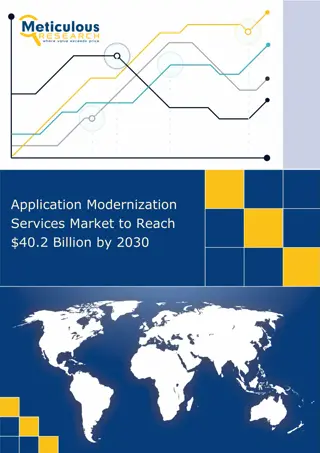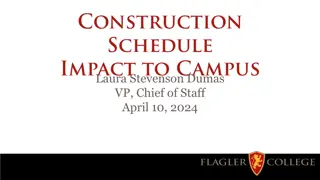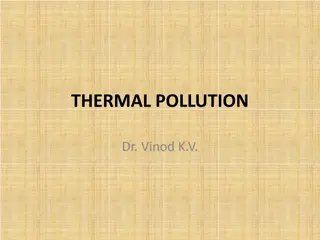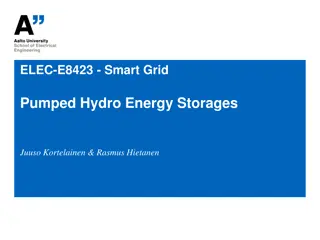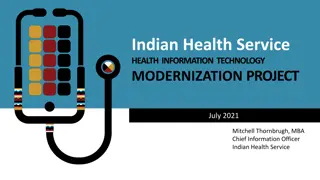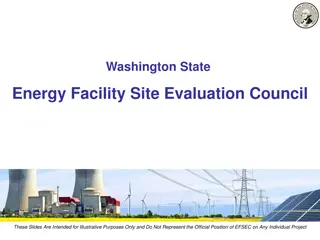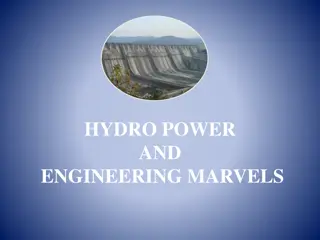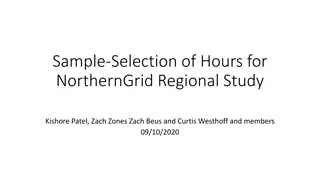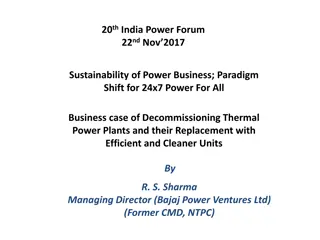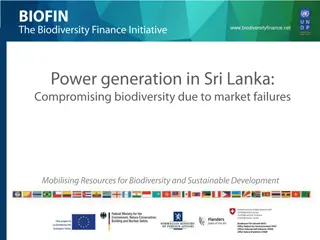Renovation, Modernization, and Uprating of Hydro Power Plants
The renovation, modernization, and uprating of hydro power plants involve enhancing efficiency, output, and reliability of aging assets through implementing latest technology. Factors such as service conditions, stress levels, and maintenance standards significantly impact the life expectancy of hydro power stations. The reasons for renovation and modernization include overcoming generic defects, obsolescence of equipment, and improving safety requirements. Furthermore, modernization is essential to adapt to changing operating criteria and update control and protection systems for increased performance and longevity.
Download Presentation

Please find below an Image/Link to download the presentation.
The content on the website is provided AS IS for your information and personal use only. It may not be sold, licensed, or shared on other websites without obtaining consent from the author. Download presentation by click this link. If you encounter any issues during the download, it is possible that the publisher has removed the file from their server.
E N D
Presentation Transcript
RENOVATION, MODERNIZATION & UPRATING OF HYDRO POWER PLANTS By B.PODDAR
1. INTRODUCTION A Hydro electric power scheme construction is normally associated with long life assets that comprise about 70 % of the cost structure Civil assets are normally not subjected to the normal wear and tear in comparison to electrical components. The life of civil assets are normally designed for 100 years whereas the remaining 30 % of electrical /mechanical assets are designed for 30 to 35 years
The life expectancy of a hydro power station mainly depends on a) Service Conditions (Peaking, base load or so on) b) Mechanical , thermal and electrical stress levels c) Environmental conditions and d) Maintenance Standards Due to prolonged operation the capacity of generation is reduced and should be revived as early as possible. Possibilities of up-rating must be explored while implementing renovation plans While up-rating, limitations of water conductor system, water availability, structure stability etc also need to be thoroughly examined.
2. REASONS FOR R & M The R & M is aimed at over coming problems due to generic defects, design deficiency, ageing, obsolescence of equipment/component and non availability of spares, in-efficiency of generating unit and safety requirements etc. The main objective of R&M is to make the operating units modified/augmented with latest technology with a view of improving their performance in terms of efficiency, output, reliability, reduction in maintenance requirement and ease of maintenance R & M is not a substitute for regular annual or capital maintenance
The main reasons for R & M can be summarized as given below The cost of new hydro plants or their complete replacement is very high. Obsolescence and non availability of spares. Old generator windings are generally equipped with class B insulation which deteriorates resulting in de rating and forced outages. De rating of the unit output due to wear and tear Increase in forced outages due to deterioration in the condition of wearable parts, unit and station auxiliaries, instruments, protective relays and control equipment.
Change in the operating criteria of the power plant in the system i.e., change in plant load factor requiring additional capacity, requirement of higher excitation system due to larger grid. Mechanical flywheel type governor for turbine control is now obsolete and not suitable for modern system for interconnected large grids for speed control and load sharing. Old shaft mounted excitation system is very slow and requires to be replaced by modern static excitation system or shaft mounted brush less system for small generators Control and protection system concept and equipment have changed. Modernization is required to change control and protection equipment.
3. UP RATING The definition of up rating is the replacement or improvement of components required to increase the unit KVA output. Before considering up rating, all components between the generator terminals and the unit transformer high-voltage bushings and also the HV switchyard, should be investigated. Prior to a generator up rating evaluation, it is necessary to determine whether or not the turbine rating can be increased with changed hydraulic conditions and improved design. This may require either a rebuilt or a replacement of turbine runner.
Up rating potential of a project depends on: The age of the equipment; Optimal utilization of inherent design margins The generator design The respective turbine up rating capabilities; The possible power transformer limitations Before evaluating an unit for increased output, present site characteristics should be compared with the original conditions. It is advisable to redefine present operating conditions to establish the following: Do original hydraulic conditions (planned water flow and/or storage and head applicable to a base year) coincide with present day conditions?
Have system requirements changed and low value off-peak energy generation to high value peak energy generation possible? Can peak loads be generated without exceeding permissible flood and/or discharge fluctuations? Do current penstocks and draft tubes or tailrace tunnels allow for increased flow? Is it possible, or even necessary, to increase the impounding height to improve flood protection for an increase in turbine output? Have system requirements changed to allow for revisions in generator design (such as power factor, reactance, and so on) The effort required to produce an up rating study is greater than for an upgrading because of the additional investigations required.
4. PLANNING AND IMPLEMENTATION METHODOLOGY The planning and Implementation methodology is highlighted in the figures 1 & 2 shown below. FIGURE 1 PLANNING FOR R, M & U
5. ECONOMY OF UPRATING Generator up rating measures do not require structural alterations to the power plant (powerhouse, dam, and so on). Increased output can thus be achieved for a fraction of the cost of building a new power plant.
6. PROJECTS IN AFRICA WHICH ARE MORE THAN 20 YEARS OLD MAY BE CONSIDERED FOR R,M & U (HAVING INSTALLED CAPACITY MORE THAN 25MW ) S. No Country Hydro Electric Station Capacity Year Completed 1 Cameroon Edea Power Station 204 MW 1953 2 Cameroon Song Loulou Power Station 384 MW 1981 & 1988 3 Cameroon Lagdo Power plant 72 MW 1982 4 Egypt Aswan Power Station 2100 MW 1970 5 Ethiopia Koka Power Station 43 MW 1960 6 Ethiopia Awash II Power Station 32 MW 1966 7 Ethiopia Awash III Power Station 32 MW 1971
S. No Country Hydro Electric Station Capacity Year Completed 8 Ethiopia Fincha Power Station 134 MW 1973 9 Ethiopia Melka Wakena Power Station 150 MW 1989 10 Ghana Akosombo Power Station 1020 MW 1965 11 Ghana Kpong Power Station 160 MW 1982 12 Ivory Coast Kossou Power Station 176 MW 1973 13 Ivory Coast Taabo Power Station 210 MW 1979 14 Ivory Coast Buyo Power Station 165 MW 1980 15 Kenya Kiambere Power Station 168 MW 1988
S. No Country Hydro Electric Station Capacity Year Completed 16 Kenya Kindaruma Power Station 72 MW 1968 17 Kenya Masinga Power Station 40 MW 1981 18 Kenya Kamburu Power Station 100 MW 1974 19 Kenya Turkwel Power Station 106 MW 1991 20 Liberia Mount Coffee Power Station 64 MW 1966 21 Malawi Nkhula A Power Station 24 MW 1966 22 Malawi Nkhula B Power Station 120 MW 1980, 1986 & 1992 23 Mozambique Cahora Bassa Power Station 2075 MW 1975 24 Namibia Ruacana Power Station 240 MW 1978
S. No Country Hydro Electric Station Capacity Year Completed 25 Nigeria Kainji Power Station 800 MW 1968 26 Nigeria Jebba Power Station 540 MW 1985 27 Nigeria Shiroro Power Station 600 MW 1990 28 South Africa Drakensberg Pumped storage 1000 MW 1981 29 South Africa Gariep Dam 360 MW 1971 30 South Africa Palmiet Pumped Storage 400 MW 1988 31 Sudan Jabal Awlia Power Station 35 MW 1937 32 Tanzania Mtera Power Station 80 MW 1979
S. No Country Hydro Electric Station Capacity Year Completed 33 Tanzania Kidatu Power Station 204 MW 1976 34 Uganda Nalubaalw Power Station 180 MW 1954 35 Zimbabwe Kariba Power Station 1320 MW 1977
7. CONCLUSION Considerable improvements in output, efficiency, reliability and availability are convincing factors for an upgrading or uprating project, but sometimes lack of funds or budget constraints become obstacles to short-term implementation. Instead of prolonged operation of ageing equipment with the associated high maintenance costs, the funding which such maintenance would require over several years can instead be allocated to performing a major overhaul at an earlier time. If a refurbishment project includes an up rating, this will usually lead to increased output revenue, and if the payback period is short, the rehabilitation should be initiated at the earliest opportunity.




